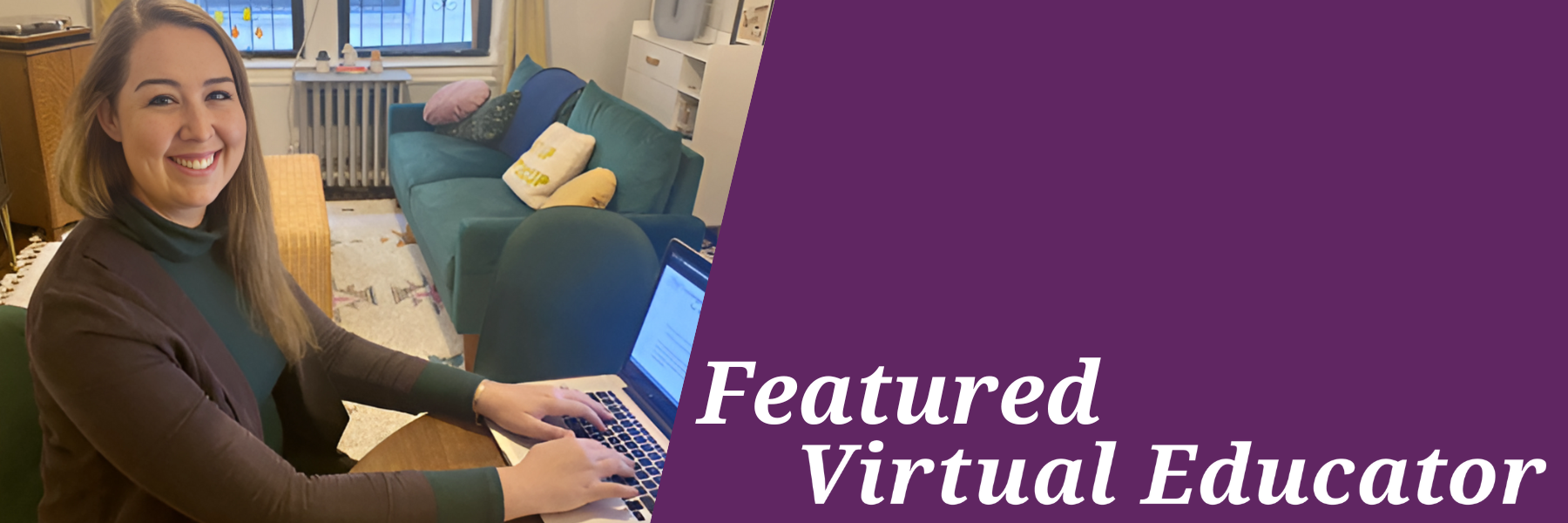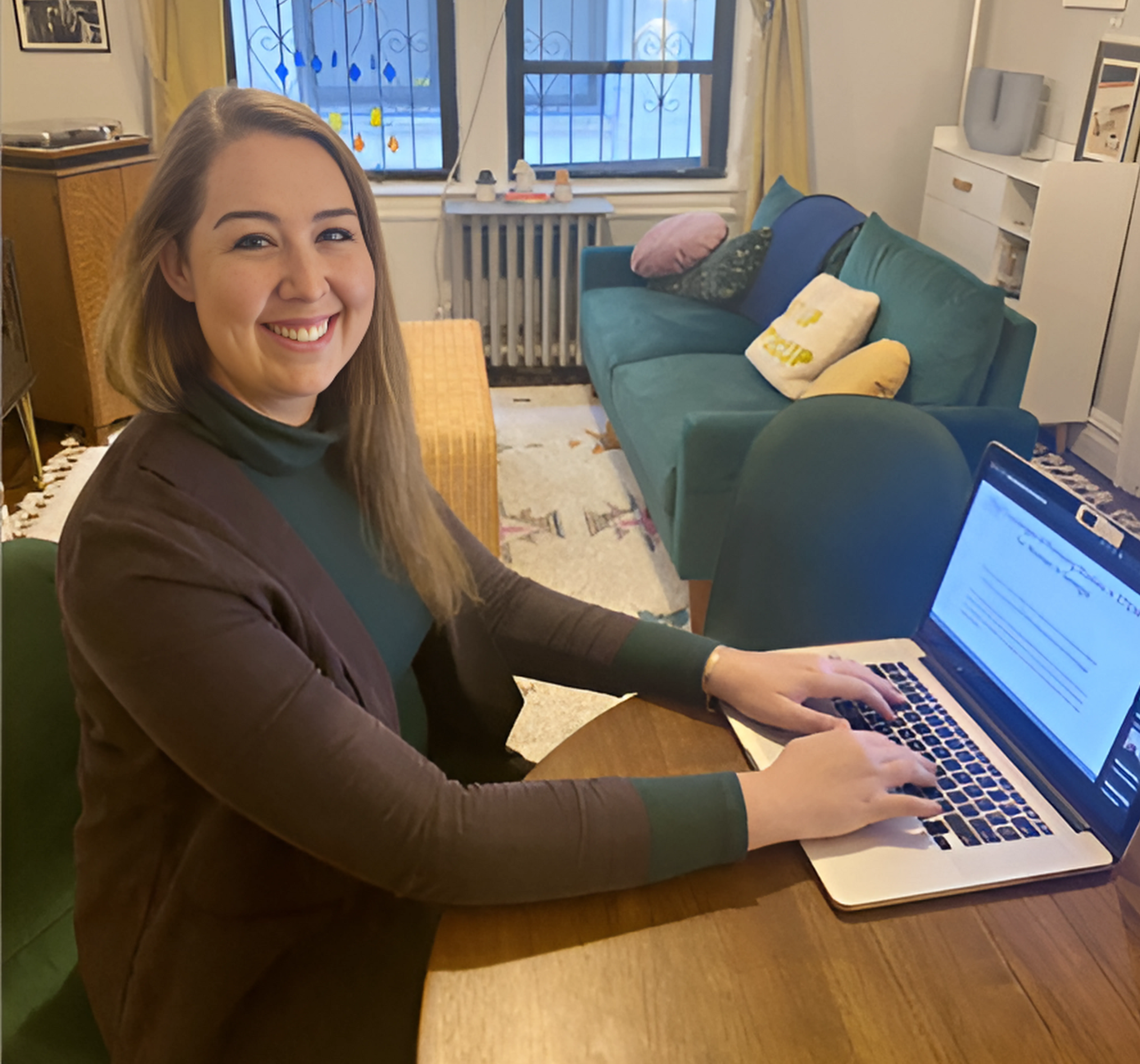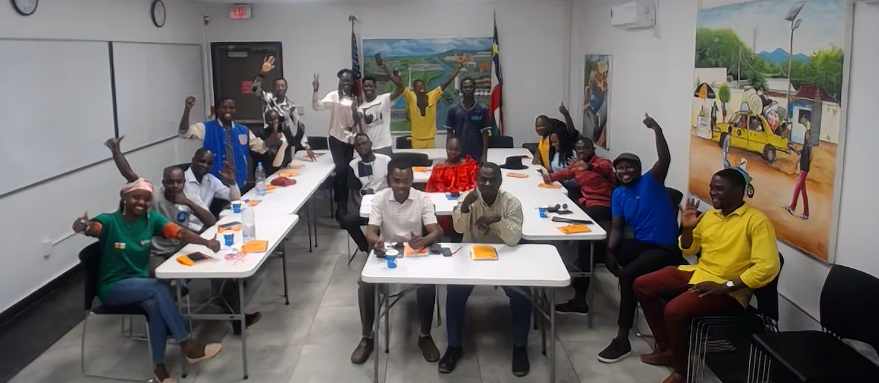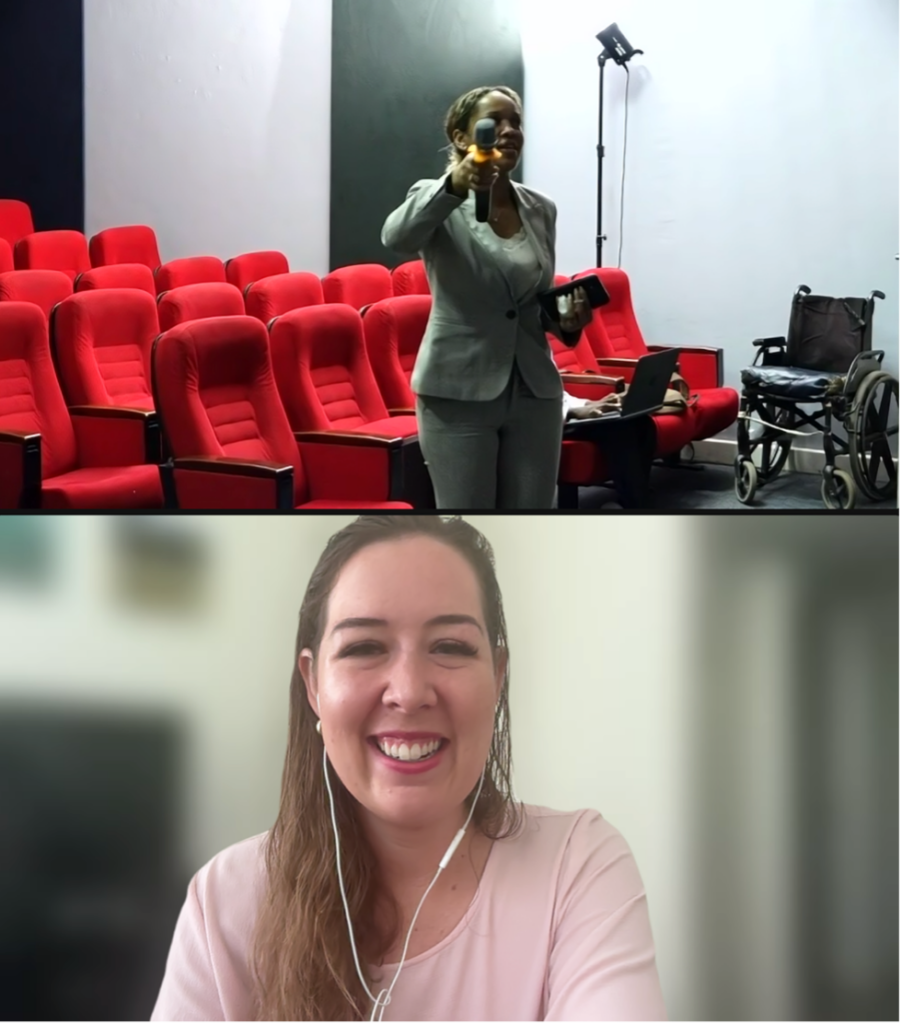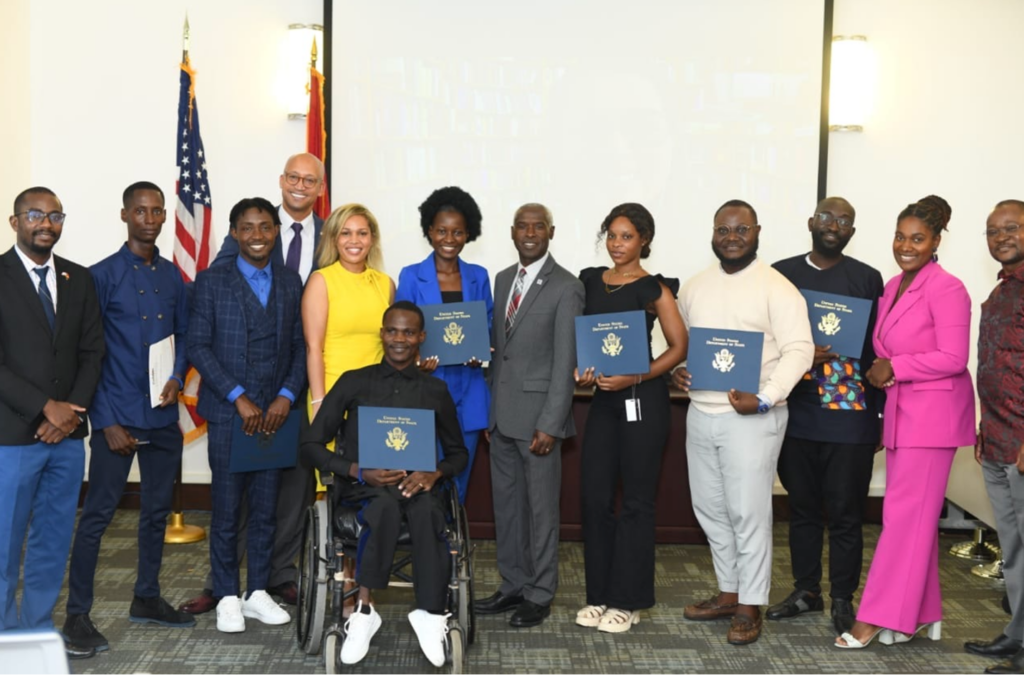The Virtual English Language Educator Program provides opportunities for educational professionals to engage with learners worldwide, bridging cultures and enriching communities. Jordan Van Horn, an accomplished educator with diverse experience as an English language teacher and teacher trainer, recently completed three projects in Senegal, the Central African Republic, and Angola. Her online teaching journey across Western and Central Africa exemplifies the program’s mission to foster education, meaningful cultural exchange, and professional growth.
Empowering Academic Excellence in Senegal
Watching my students grow as writers and thinkers was the most rewarding part of this experience.
Van Horn’s first assignment took her to Dakar, Senegal, where she taught academic English to a group of highly educated adults, many of whom held advanced degrees. The students, professionals in fields ranging from STEM to public policy, brought their ambitions and intellectual curiosity to the virtual classroom. “It was inspiring to work with students who brought such diverse expertise into the classroom,” Van Horn shared.
Over four months, Van Horn guided students through academic writing, helping them produce research essays on critical topics such as the impact of climate change on soil sequestration and the challenges of advancing women in STEM fields. She emphasized collaborative learning, introducing peer reviews and one-on-one feedback sessions. “Watching my students grow as writers and thinkers was the most rewarding part of this experience,” she said.
Students demonstrated remarkable dedication, often balancing their coursework with demanding professional lives. Their essays highlighted local issues and global trends, illustrating the profound value of a well-rounded education. By the end of the course, each student was able to produce a well-researched essay.
Overcoming Challenges in the Central African Republic
Van Horn’s second Virtual English Language Educator project brought her to Bangui, Central African Republic, where she worked for four months with 30 adult journalists on English language skills and media literacy. The journalists, representing diverse media outlets, faced challenges including limited internet access and varying levels of English proficiency. Van Horn adapted by implementing innovative teaching strategies tailored to the students’ needs. “The obstacles pushed me to think outside the box,” she explained.
To bridge the technological gaps, she used tools like WhatsApp for voice notes, QR codes for interactive activities, and group tasks to maximize class engagement despite connectivity issues. One of her most memorable lessons involved students collaborating on capstone projects that addressed pressing local issues. Topics ranged from gender-based violence to endangered species trafficking, reflecting the students’ deep connection to their communities.
Van Horn also leaned on her creativity to design lessons that were both engaging and adaptable. “Sometimes, the power would go out, or I couldn’t hear individual students clearly. These moments forced me to think creatively and remain flexible,” she shared. Despite these obstacles, the class thrived, with students gradually gaining confidence in their writing and presentation skills.
“This experience was both humbling and inspiring,” Van Horn said. “The resilience and dedication of my students taught me as much as I taught them. It reinforced the importance of adaptability and creativity in teaching.”
Fostering Innovation in Angola
In her final Virtual Educator project, Van Horn taught English and journalism to a smaller group of adult journalists in Luanda, Angola, for two months. With improved classroom infrastructure, she was able to focus on innovative lesson plans and multimedia projects. Van Horn introduced students to authentic news articles from major outlets, encouraging critical analysis and discussion.
“Helping students create videos on community topics was a new challenge, but it was incredibly rewarding,” she reflected. These videos allowed students to spotlight social issues in their communities, from youth unemployment to public health concerns. Van Horn worked closely with each student, providing personalized feedback to ensure their work resonated linguistically and emotionally.
This project also deepened her understanding of the students’ daily struggles, such as navigating flooded roads during heavy rains. “Their determination to show up to class despite the challenges was a powerful reminder of the value they placed on education,” she noted.
Building Connections Through Cultural Exchange
Van Horn’s journey as a Virtual Educator was as much about cultural exchange as it was about teaching. She cherished the opportunity to learn from her students, particularly during unplanned moments of cultural sharing. In Senegal, for example, she paused a lesson to explore the Grand Magal of Touba, a significant local Islamic tradition and pilgrimage. “Moments like these remind me that teaching is a two-way street. I learned so much from my students,” Van Horn remarked.
Through storytelling and interactive lessons, Van Horn also shared the diversity of American culture, using maps, literature, and visual media to illustrate the richness of life across the United States. “My students were fascinated by stories from places like Alaska, Arizona, and Maine,” she said. “It was rewarding to see their curiosity grow.”
Over the course of her three projects, Van Horn frequently emphasized the diversity of U.S. regions, providing relatable cultural examples that resonated with her students’ varied interests. This mutual exchange created a sense of connection that made every lesson a shared learning experience.
Professional Growth
The skills I’ve gained—adaptability, creativity, and problem-solving—are invaluable.
The program significantly enhanced Van Horn’s professional skills, especially her ability to navigate complex teaching environments. Internet outages, varying levels of digital literacy, and other logistical challenges pushed her to innovate and refine her teaching toolkit.
Van Horn developed strategies like differentiated QR code activities to cater to students’ diverse needs and skill levels. For example, she created parallel tasks for advanced and beginner students, ensuring everyone remained challenged and engaged. She also utilized subgroups on WhatsApp to facilitate practice outside of class. “This tool was a game-changer—it helped even my quietest students shine,” she said.
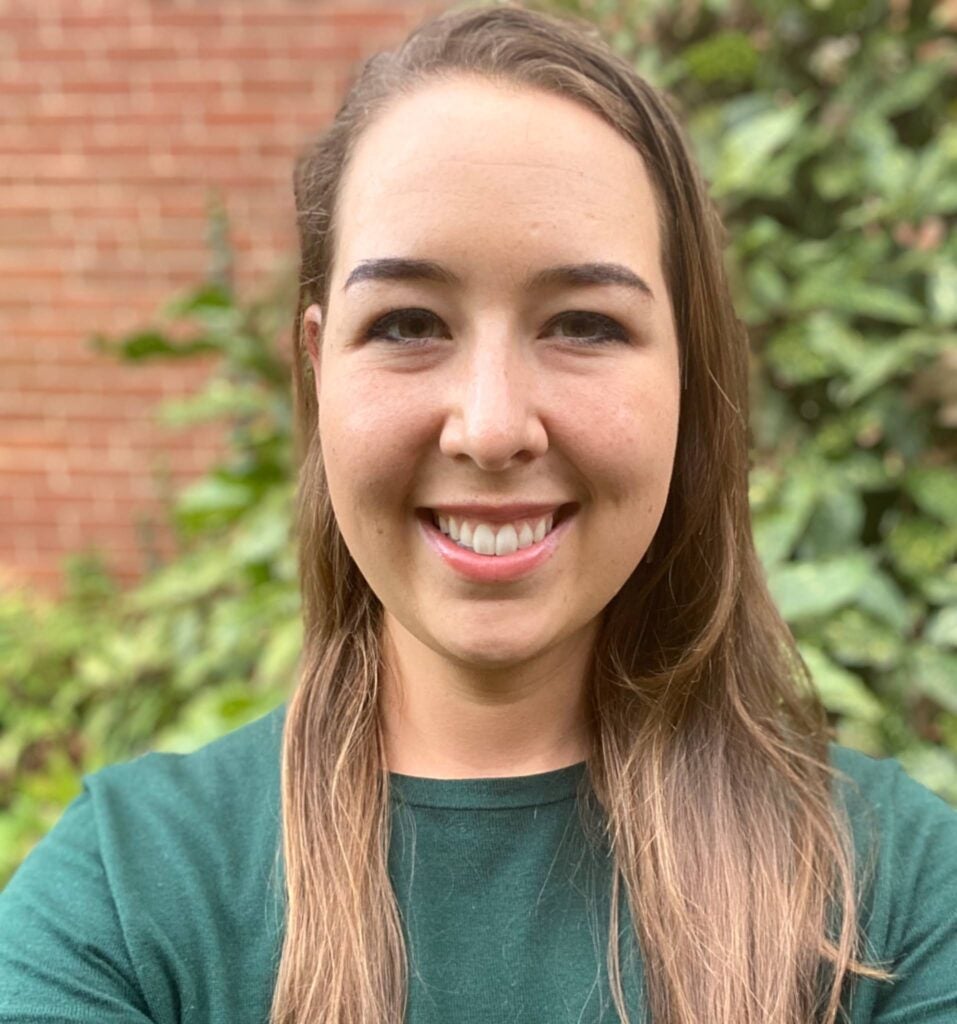
Jordan Van Horn is from Baltimore, Maryland, and has taught immigrant adults from over 80 countries in contextualized workforce training programs, online EFL settings, and in academic courses for degree-seeking students. Van Horn managed testing and enrollment, trained teachers, and organized professional development as the ESOL coordinator for the Center for Immigrant Education and Training at LaGuardia Community College. She also worked as the Saturday and Evening Coordinator for The English Language Center, one of the largest ESL programs in the New York Metropolitan Area. In addition to teaching and administration, Van Horn has written grants, developed curricula for the City University of New York, and served as the NYS TESOL NYC Region Co-Chair, where she partnered with the MoMA, Whitney, and Tenement Museum to demonstrate how museum spaces can be used as tools for language learning. From 2022-2024, Jordan worked as a Virtual Educator, teaching English and Journalism in Senegal, the Central African Republic, and Angola. She holds an M.A. in Interpreting and Translation Studies from Wake Forest University and an M.A. in Applied Linguistics from Teachers College, Columbia University. Van Horn is currently an adjunct English professor in the ELAP program at Montgomery College.

